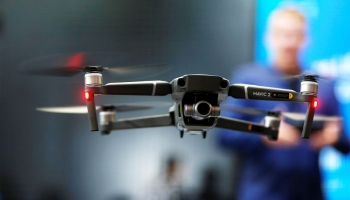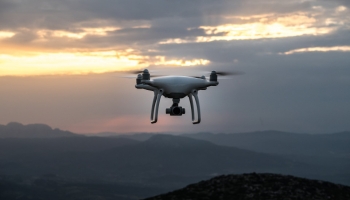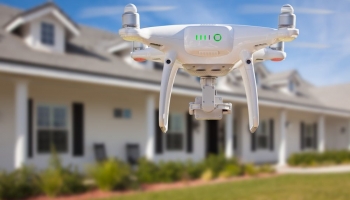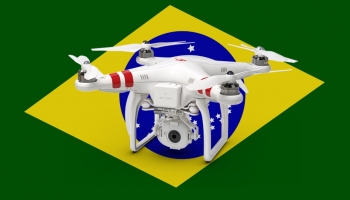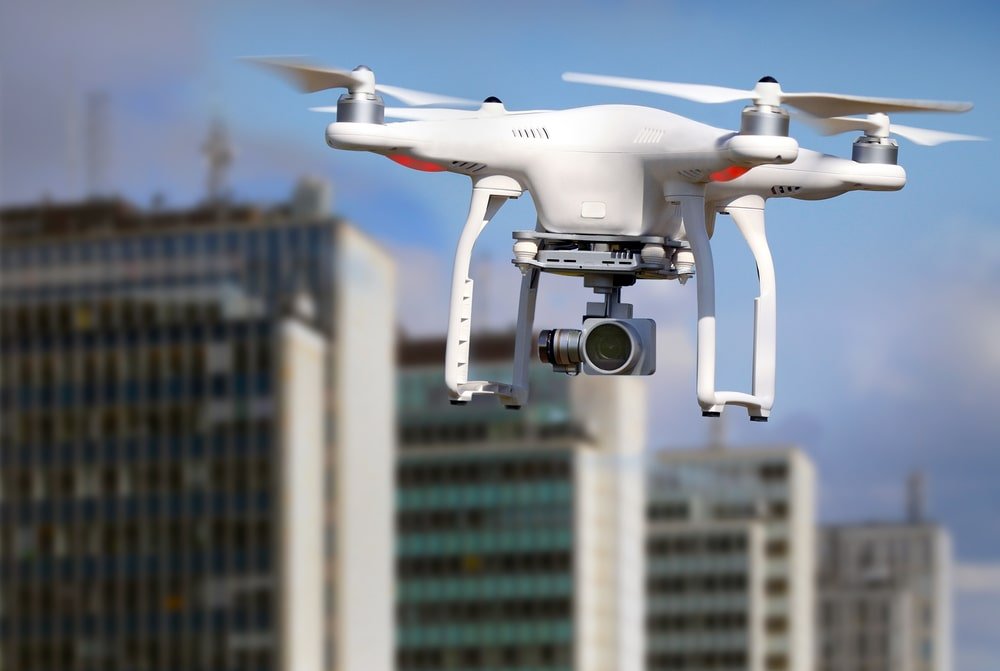
Drones, a 150-year-old technology first employed back in 1849 to remotely drop. bombs from air balloons have come a long way, and will likely be a big part of our future.
Amazon, for example, envisions operating thousands of drones in the future to deliver packages right to your door in 30 minutes or less.
As to how high can drones fly, and where can they be used for, those are simple questions but involve sophisticated answers. So let’s dig in.
Distinguishing military from the commercial
The first thing to consider is to separate military uses from civilian uses. Within 15 years after the Wright Brothers’ first flight, military forces had experimental drones such as the Kettering Bug, an unmanned flying bomb.
Today, of course, advancements have led to solar-powered unmanned aerial vehicles such as the Zephr, created by Airbus Defence and Space, which can stay aloft for 25 days at a stretch, and the Northrup Global Hawk which operates at altitudes of 66,000 feet.
At least in the United States, the Federal Aviation Administration has been reluctant to release drone technology on an open basis. It was only in 2006 that drones were approved by the FAA to be used as survivor/rescue vehicles in times of floods and hurricanes.
Commercial drone use is in its infancy in the U.S., primarily because before 2018 if you wanted to use a drone for commercial uses, the operator had to be a licensed pilot. In other countries, writes Naval Captain John Edward Jackson, writing for The Verge , they are using drones to crop dust in Japan, inspect pipelines worldwide, and for farmers to survey their crops.
What are the legal height limits to fly a drone?
Even if you were Elon Musk or some other eccentric billionaire who could afford the estimated $150,000 per hour flight cost for a military application drone, it doesn’t mean he could or one of his minions could fly one at 60.0000 feet.
In the United States, the legal limit to fly a drone without FAA approval is 400 feet. While in Europe this heigh limit is extended to 500 feet, according to Drpnelogic.com a popular drone internet site.
The reason for these rules is that small aircraft have to fly at 1,000 feet over built-up areas according to FAA rules, and 500 feet over less populated areas. So these rules are created for safety and to avoid any possible mid-air collisions.
So how How High Can Drones physically Fly? Around 1500 feet seems to be the maximum, but it’s said that a hobbyist from the Netherlands flew his DJI Phantom 2 more than 2 miles high (120 meters) on March 3rd. This has prompted many conversations about safety with drones.
Can ordinary drones that the pubic can purchase fly higher?
Legally, without the FAA’s permission, no. But are they capable of flying higher? Yes.
It should be understood that while many drones are capable of exceeding the height limits, generally their software prevents it from going too high.
But how high is high? According to Drone Pilot Ground School if you fly a drone over a 1200 foot communication tower, the FAA allows you 400 feet of clearance, so in this case, the max limit would be 1600 feet.
How high can ordinary drones really fly? According to Popular Science a Dutch Hobbyist, code-named Tullymaster, in an attempt to capture the world for how high a person could fly with a commercial drone, flew his Phantom 2 over Holland at 3.4 kilometers (approximately 1155 feet)
Tullymaster’s drone had a camera and he posted the video on Youtube before shortly afterward taking it down. Probably for fear of being caught. After all, the permissible height in the Netherlands was 3900 feet.
Most drone aficionados theorized that Tullymaster bypassed the firmware built into his drone, but never the less, it did prove that drones can fly plenty high, and theoretically, do plenty of damage to aircraft. Even commercial airlines fly as low as 11,000 feet when climbing to altitude or returning from higher altitudes, and no doubt, a drone sucked into a jet engine would do tremendous damage.
Are their other drone restrictions besides height?

Yes. First of all, a drone has to weigh less than 55 pounds, which is why if Amazon is ever given the legal ability to fly packages, don’t expect that Samsung Refrigerator or Ikea couch to be delivered via drone.
In fact, if your drone weighs more than 8.8 ounces according to PC Magazine You are required to register your drone with the FAA and display your FAA identification number on the exterior of your drone.
When registering your drone, you are agreeing to follow all of the FAA rules including:
- 1. keeping your drone within eyesight
- 2. Restraining from flying near other aircraft or near airports
- 3. Not flying near restricted spaces such as the White House, Congress, the Supreme court or even the Famed Area 51 to get a glimpse of the space aliens.Be also aware that many states and cities have their own restrictions.
- 4. Not flying over crowds such as sports stadiums
- 5. Avoid flying near emergency responders in the course of their duty
Are there additional rules for those engaged in the commercial flying of drones?
Again, yes. Besides registering their drone, commercial entities must be required to pass an FAA test to get a commercial Remote Pilot Certificate.
This means if you fly recreationally and your friend has a real estate license, you cannot fly over one of his homes for sale and get $20 for your effort.
Although many photographers ignore this rule, it still requires a professional, in-command license to do it legally.
According to Dart Drones.com a designated Pilot in Command must be responsible to see that all the FAA rules, which are quite extensive are being followed.
The two main elements, which restrict greatly the commercial aspects of using a drone are the requirements for line of sight, and the requirements that drones are not to be used at night.
In military applications, remote operators have control of military drones, often thousands of miles away. While this gives operators of military drones almost total control, the expense for all the supporting networks that allow remote control is expensive.
With an ordinary drone, the FAA requires line of sight for the drone, which is why Amazon’s drone delivery force in nothing but a pipe dream at present.
In addition, drones are not allowed to be used at night, which prevents, for example, a local security company from patrolling a subdivision for burglars or those who don’t belong.
In fact, even during the day drones could not be used because every individual that a drone flies over has to agree to the event. Even a burglar caught during the day could
go to civil court and allege invasion of privacy because the security company ignored Federal law.
The bottom line is that when it comes to becoming commercially viable, drone operators must play with a generally restrictive set of rules until the FAA sees to open things up further.
Summary
Drones are a great toy for both adults and children, but everyone needs to recognize the tremendous danger of drones. A family at the park or beach isn’t expecting to be suddenly bombarded by an errant drone. and drones, which can travel at a minimum speed of 50 to 70 miles per hour.
In particular, commercial drone users need to be cognizant of all the rules or face both fines and lawsuits.



